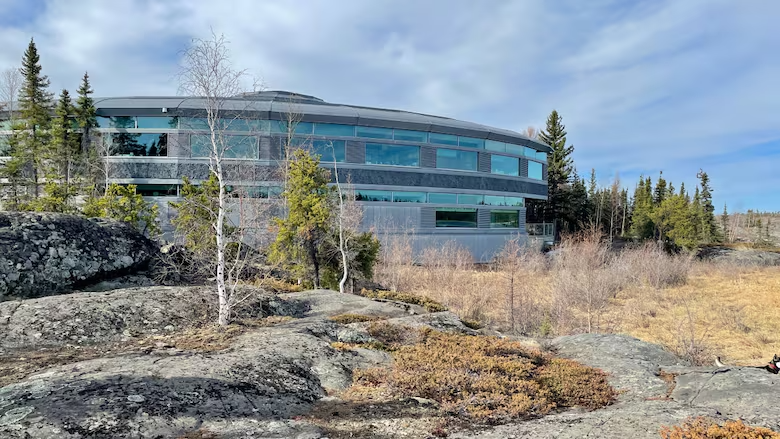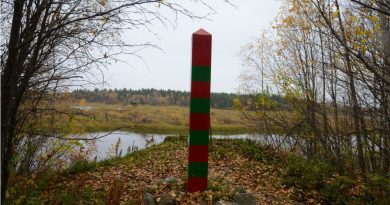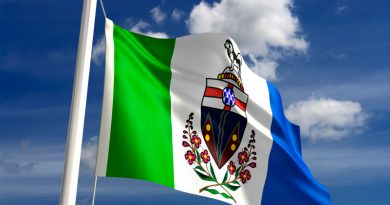Here’s why Ottawa still covers most of the N.W.T.’s annual budget

By Nadeer Hashmi
This year, the territory is receiving about $1.8B through federal funding to cover its $2.5B budget
It’s the biggest source of revenue for the N.W.T. government this year, just as it was last year and the year before that: federal transfer payments.
“Territorial Formula Financing is the largest source of the government’s revenues and the primary driver of overall revenue growth,” N.W.T. Minister of Finance Caroline Wawzonek told MLAs last week, during a committee meeting to help them understand how the funding works.
In 2025-26, the N.W.T. is receiving about $1.8 billion through Territorial Formula Financing, a major chunk of revenue for its $2.5 billion budget to run the territory this year. The funding is also especially useful because it’s unconditional, and can be spent however the territory wants.
Why the N.W.T. gets this funding
N.W.T. finance department officials said the formula for this transfer payment takes into account several factors including the territory’s population growth, and spending on public services elsewhere in Canada.
This year, the federal government has calculated that the N.W.T. will need $2.2 billion to deliver public services such as health, infrastructure, and education, that are comparable to what is available in the provinces.
But the territorial government is only expected to be able to raise $386 million in revenue through taxes — less than a fifth of that $2.2 billion. The $386 million would include revenue from personal income taxes, business income taxes, property taxes, and other sources.
“That gap is just so large relative to what we see elsewhere, that we need a special type of transfer,” Trevor Tombe, an economics professor at the University of Calgary, told CBC News.
Tombe says the Territorial Formula Financing from Canada bridges this gap, so the N.W.T. can offer public services similar to the provinces.
He added it’s unlikely the territory would ever be able to outgrow this support, pointing out that this year’s Territorial Formula Financing is around five times as much money as the N.W.T. could get from taxes over the same period.
He says the additional money is necessary to run a vast, sparsely populated territory.
“N.W.T. is not unique,” Tombe said. “Yukon and Nunavut are also quite reliant on Territorial Formula Financing for the simple reason that spending needs to be a lot higher to deliver comparable levels of public services compared to the tax base that actually exists in the territories.”
Population effect
In the briefing, several MLAs told Department of Finance officials that most N.W.T. residents believe the funding is calculated solely based on population numbers, so increasing the territory’s population would result in getting more money in total — but staff at the department said that’s not completely accurate.
Tombe explained the payment is based on how much spending on public services has increased across the country, as well the N.W.T.’s population.
He said in the most recent aggregate figure, about $820 billion was being spent altogether across the provinces to deliver public services. That increased from about $767 billion the year earlier, a seven-per-cent increase in total provincial and local spending elsewhere.
He said some of that increase in spending Canada-wide is because of population growth in other parts of the country.
Tombe says the N.W.T.’s population growth is about 1.6 per cent slower than other places in the country — and this number is used to calculate how different the increase in funding for N.W.T. services should be than that national average.
“If the population in N.W.T. is growing more slowly than what we observe elsewhere, then we want to deflate, you know, how much of an increase N.W.T. would get,” Tombe said.
The N.W.T.’s Territorial Formula Financing of $1.8 billion is up from about $1.7 billion last year, less than that seven per cent number to reflect the N.W.T.’s slower population growth.
Currently, the N.W.T. gets about $42,000 of Territorial Formula Financing per person.
“There’s a lot going on under the hood,” Tombe said.
Related stories from around the North:
Canada:Territorial premiers say internal trade talks should consider northern context, Reuters
Greenland: US private sector delegation heads to Greenland, Reuters
United States: Greenland ‘Freedom City?’ Rich donors push Trump for a tech hub up north, Reuters



